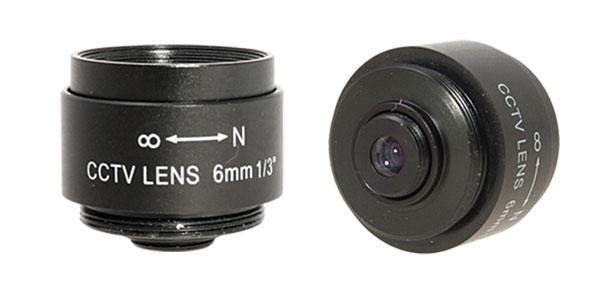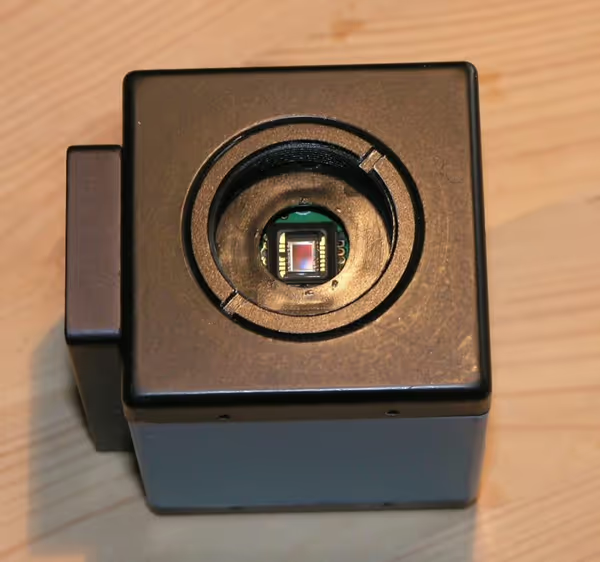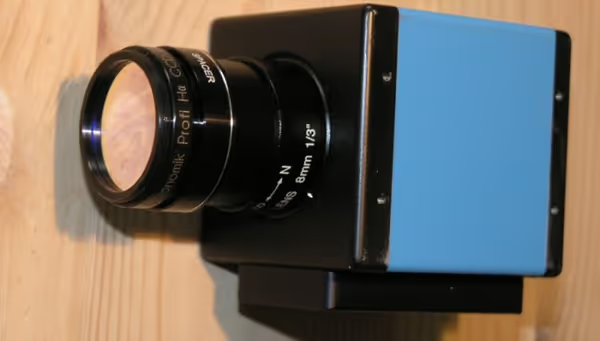Wide field imaging with DMK/DBK/DFK cameras and CS lens
The Imaging Source cameras like DBK/DFK/DMK are industry cameras with CS mount. Usually you use 1,25" nosepiece and connect it to the scope. There is also another usage for the CS-mount. You can use simple CS lenses to get very wide field images of big nebulae and constellations.
There are two primary types of lenses for industry cameras - C-mount and CS-mount. The difference is that CS focus lower than C lenses. So for a CS camera we need CS lens or a C lens with a spacer. Each lens is clearly marked as CS or C. There also should be information about matrix size it can illuminate. For D*K21 we need 1/4", 1/3" or better lenses. For D*31 1/3" or better (1/3" is most common for those lenses), and for D*K41 we need 1/2" or better lens. You can buy them in shops with electronics, surveillance cameras and equipment. Basic lenses are very cheap.

For TIS cameras that don't have very small pixels I would advise 8-16 mm fl lenses. 2-4mm fl would give very strong sub-sampling. Nearly all lenses are f/2 so you have to note they will show field curvature as well as they can have chromatic aberration.
DMK21 and a CS lens in action
In my case I've used 8mm 1/3" CS lens with DMK21. It gives about 145 arcsec/pixel which is a lot. I screwed the lens to the CS thread of the cameras first image), but then I couldn't get it to perfect focus. I've unscrewed the thread a bit (the CS thread can move) and the lens then could focus without any problems:


The filter must be as close to the lens as possible. It has so big field of view that vignetting will show up if the filter will be to high. Also such lens is fragile to light like street lights or even laptop screen. A wide dew shield may be needed to remove flashes from such source.
TIS cameras have a plate at the bottom with has 1/4" standard tripod holes. You can screw the camera to SkyWatcher mounting rings, Celestron piggybacks for SCTs or other photo tripods. Piggyback on a scope on an EQ mount is a solution for long time exposures.

Imaging DS objects with a CS lens can teach DS imaging with DS cameras and scopes as more processing is needed when compared to planetary imaging. First we use different settings. Exposures are long - for AVI 30-50 sec, for BMP sets of images even longer. Gain should be as low as possible. 50-75% at start. On longer exposures you can try even with 25%. Low gain and long exposures increase signal to noise ratio. Stacking many short exposed frames won't give that boost like stacking less but better long exposed frames. For capturing you have to use IC Capture AS or other similar software that works correctly with longer exposures. FireCapture cannot be used.
When you done imaging selected part of the sky you have to take dark - cover the lens or mount the CS nosepiece with a cover and take some frames with the same settings - to capture camera noise and remove it from the stack in Registax. To make a dark from an AVI or set of BMPs you open them in Registax and in top menu you choose the "create dark" option. It will stack and give you the result. Save it as BMP (must be BMP) and then select that BMP as dark frame in Registax. When you do this you can open the AVI/BMP set of the sky and stack if like if it was a planet - point alignment square on a star and let it do the magic. Raw stack can be processed in Photoshop or other astro processing software. You don't sharpen it but you usually have to modify levels, curves or remove gradients.

Comment article